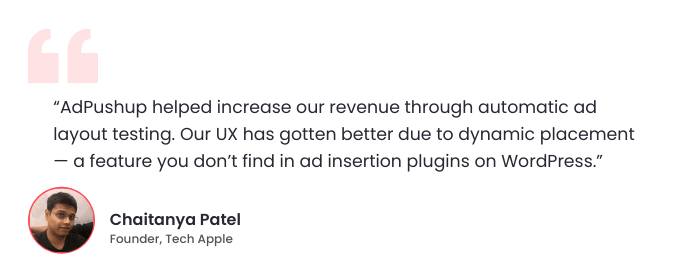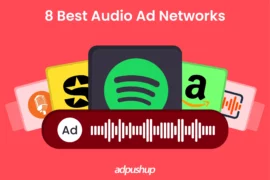Volume or Margin – what would be your pick as a publisher selling ad inventory?
If you bank on volumes to meet your monthly ad revenue target, here’s an interesting proposition for you.
Discounts drive volume. You compromise on your usual margins to increase the net revenue flow.
Post-auctions help you do just that. They lower the buying price for agencies, and provide a higher volume for the publishers.
So, what is a post-auction discount?
A post-auction discount is a deal offered by the publisher to the buyer (DSP) in programmatic advertising after the auction is complete. During the auction, the DSP competes on regular bid prices. Essentially, it gets the ad space at a lower price without impacting its auction win-rate.
How’s it different from private marketplace deals, you may ask.
In private marketplaces, publishers and sellers interact directly. A closed marketplace makes it possible to honor those deals. But in an open marketplace, things get complicated for such preferential discounts. SSPs offer a workaround to make these deals happen after the completion of the auction in an open market.
However, like the private marketplace, the publishers set the discount and decide when to apply it. The discounts though, are offered through the SSP.
How Do Post-Auction Discounts Work?
DSPs and SSPs work with predetermined discounts for a specific set of impressions for a given advertiser. When the DSPs bid upon those impressions, they compete with other regular bids sans the discount. Only on winning those bids, the discount kicks in.
Here’s an example:
An advertiser makes a winning bid of $10 on specific impressions. After winning the bid in the open marketplace, the publisher offers a 10% discount (which would be pre-agreed). The advertiser pays $9.
The table below illustrates this with and without Post-Auction Discounts applied.
| Without Post-Auction Discounts impression 1 | With Post-Auction Discounts impression 2 | |
| DSP bid price | $10.00 | $10.00 |
| Exchange fee % | 15% | 15% |
| Bid competes at | $8.50 | $8.50 |
| Discount % | n/a | 10% |
| DSP pays | $10.00 | $9.00 |
| Exchange fee | $1.50 | $1.35 |
| Publisher Revenue | $8.50 | $7.65 |
Source: Index Exchange
While the actual discount may vary, many would question the fairness of the deal. Two questions that immediately come to the mind are:
- What’s the point in offering a discount when the advertiser is willing to pay a higher price? Moreover, there could be other advertisers participating in the auction who can pay higher than post-discount amount; why offer a discount?
- The ethical side of auction – How would it be fair to the second-highest bidder who was willing to pay $9?
To answer the first question, post-auction discounts serve as an incentive to advertisers with large budgets to spend more. It helps the publisher capture a greater share of the ad spend by the advertiser in question. Also, during business-as-usual publishers run a risk of ending up with unsold ad inventory; selling it at a discount makes for a better business decision.
Addressing the second question of ethics – the auction process is fair and transparent and the highest bidder wins. Moreover, the discount is available only to select advertisers who intend to buy a greater volume of ad inventory. In effect, the highest bidder ends up paying more at the end of the day.
However, the questions around transparency, and agencies using their buying power to force discounts on publishers remain unanswered.
How Do They Benefit the Publisher, if at all?
A reduction in the margin isn’t something publishers would cheer. Although a few media executives suggest that a part of the loss is absorbed by the SSP, the justification doesn’t quite cut it with most publishers, because lost revenue in part or full is still lost revenue.
Agencies, on the other hand, justify the post-auction discounts saying the publisher makes the money that she would have otherwise lost to a rival.
But as a premium publisher who has advertisers vying for space, you wouldn’t care less about money lost to rivals; would you? If you aren’t a premium publisher, would you be able to discount your prices which would already be at a minimum?
While there are downsides to a post-auction model, the advantage is realized in full when large agencies like GroupM concentrate their spend between a handful of SSPs. The publishers associated with such SSPs are more likely to benefit with large ad spends coming their way.
The catch, however, lies in the quantum of discount, which can at times extend up to 50%. Assuming a 50% discount, publishers would do well to have twice the volume and significantly increase their inventory to accommodate them.
As a natural fallout, the publishers also run the risk of a drastic drop in revenues if agencies end up buying the same number of impressions at a discounted price.
Any examples around?
Yes, the recent deal between GroupM and Index Exchange has been the talk of the town. It’s sparked off a debate considering how, in a certain way, it makes the buying and selling for ad spaces hazy.
While the concept of discount isn’t entirely new, it opens up the avenues for the agencies to exert their influence at SSP level for better deals.
According to Brian Leder, President of media agency Ramp97, “Given the sheer volume of budget invested in programmatic media, exerting buying power and influence at the SSP level is a logical next step that creates a non-agnostic yet incremental and (let’s not fool ourselves here) non-transparent revenue stream to boost agency profitability.”
As a result, going forward, the publishers’ say in offering and setting discounts could diminish.

Final Thoughts: Should Publishers Opt for Post-auction Discounts?
Bulk media buying on any platform traditionally operates on discounts. With post-auction discounts, large media buyers seek similar benefits as they do on other platforms or in private marketplaces.
For large premium publishers with bargaining power to control the discounts, post-auction discounts may not impact revenues as much. Relatively smaller players may have to work with the SSPs to actually benefit from post-auction deals.
In essence, both SSPs and publishers have to sacrifice a part of their margin on every winning bid by the agencies, to incentivize them to spend more. The litmus test lies in how much more the publishers make with every penny they give up in post-auction discount.
A growth blog for professional bloggers and ad ops professionals.







